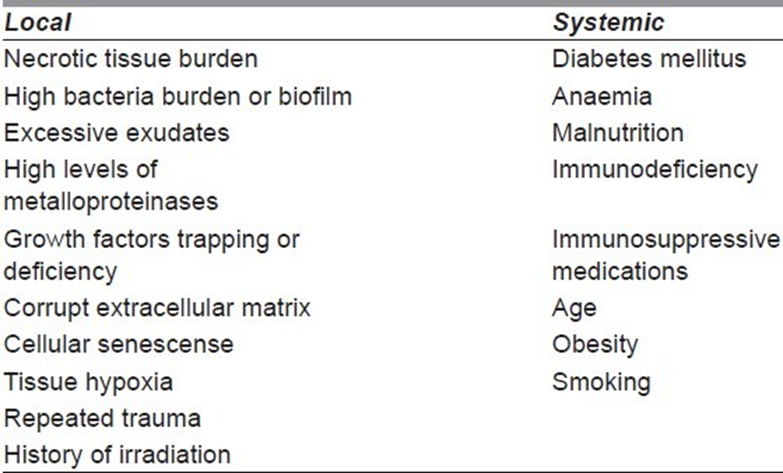A nurse is caring for a client who is scheduled for surgery.
Exhibit 1
Medical History
0800:
Client has a history of malnutrition, hyperlipidemia, and diabetes mellitus.
Mini Nutritional Assessment screening tool score of 7 points (0 to 14 points)
The nurse is reviewing the client's medical record. Which of the following findings places the client at risk for delayed wound healing? Select all that apply
History of diabetes mellitus
Cholesterol level
Prealbumin level
History of hyperlipidemia
Mini Nutritional Assessment screening tool score
History of malnutrition
Correct Answer : A,C,E,F
A. History of diabetes mellitus: This is correct. Diabetes mellitus can lead to delayed wound healing due to various factors, including impaired circulation, neuropathy, and compromised immune function.
B. Cholesterol level: While abnormal cholesterol levels can impact cardiovascular health, they are not directly linked to delayed wound healing unless they are part of a broader metabolic disorder or condition that affects vascular health.
C. Prealbumin level: Prealbumin is a marker of nutritional status. Low prealbumin levels can indicate malnutrition, which is a risk factor for delayed wound healing.
D. History of hyperlipidemia: Hyperlipidemia refers to high levels of fats (lipids) in the blood, such as cholesterol and triglycerides. While hyperlipidemia is associated with cardiovascular risk, it is not a direct risk factor for delayed wound healing unless it is part of a broader metabolic syndrome or condition affecting vascular health.
E. Mini Nutritional Assessment screening tool score: This is correct. The Mini Nutritional Assessment (MNA) screening tool assesses nutritional status, and a low score indicates malnutrition or nutritional deficiencies, which can contribute to delayed wound healing.
F. History of malnutrition: This is correct. Malnutrition, whether due to inadequate intake, absorption issues, or other factors, is a significant risk factor for delayed wound healing as it affects the body's ability to repair tissues and fight infection.

Nursing Test Bank
Naxlex Comprehensive Predictor Exams
Related Questions
Correct Answer is D
Explanation
A. Giving the client's medications between meals:
Administering medications between meals does not address the risk of aspiration associated with dysphagia. Moreover, timing of medication administration in relation to meals may vary depending on the specific medication requirements.
B. Assisting the client into semi-Fowler's position:
While positioning can play a role in facilitating swallowing, semi-Fowler's position alone may not be sufficient to address the risk of aspiration in clients with dysphagia. Moreover, simply positioning the client without considering other factors may not ensure safe medication administration.
C. Encouraging the client to use a straw to take the medication:
Using a straw might not be appropriate for clients with dysphagia as it can increase the risk of aspiration, especially if the client has difficulty controlling the flow of liquid or coordinating swallowing movements.
D. Administer the client's medications one at a time.
Dysphagia refers to difficulty in swallowing, which can increase the risk of choking or aspiration. Administering medications one at a time ensures that each pill is swallowed safely and reduces the risk of aspiration. It allows the nurse to closely monitor the client's ability to swallow each medication and intervene if necessary.
Correct Answer is C
Explanation
A. Level of orientation:
The level of orientation refers to the client's cognitive status and ability to understand their surroundings. While important for overall assessment and care planning, it is not typically included in anthropometric assessment, which focuses specifically on physical measurements and characteristics of the body.
B. Respiratory rate:
Respiratory rate is a vital sign that reflects the client's respiratory status and is important for assessing oxygenation and ventilation. However, it is not part of anthropometric assessment, which primarily focuses on physical measurements related to body size, shape, and composition.
C. Weight
Anthropometric assessment involves the measurement of various body dimensions, such as height, weight, and body composition. Weight is a crucial component of anthropometric assessment as it provides information about the client's nutritional status, growth patterns, and overall health. Monitoring changes in weight over time can help identify trends and assess the effectiveness of interventions aimed at improving nutritional status or managing health conditions.
D. Current pain level:
Pain level is important for assessing the client's comfort and managing pain effectively, but it is not included in anthropometric assessment. Anthropometric assessment focuses on objective measurements of body dimensions and characteristics rather than subjective experiences such as pain.
Whether you are a student looking to ace your exams or a practicing nurse seeking to enhance your expertise , our nursing education contents will empower you with the confidence and competence to make a difference in the lives of patients and become a respected leader in the healthcare field.
Visit Naxlex, invest in your future and unlock endless possibilities with our unparalleled nursing education contents today
Report Wrong Answer on the Current Question
Do you disagree with the answer? If yes, what is your expected answer? Explain.
Kindly be descriptive with the issue you are facing.
